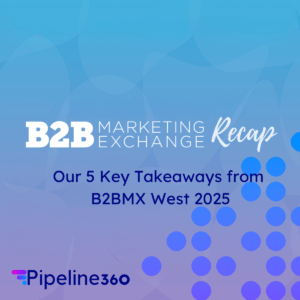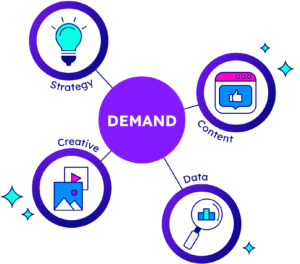More than decade ago, a series of research studies defined that the average B2B purchase process was approaching 70% before a buyer engaged with a sales rep. In 2015, the B2B sales and marketing analyst firm Sirius Decisions – now part of Forrester – projected that by 2025, 80% of the B2B purchase process would be conducted via digital channels. This research confirmed what many in the industry already understood: digital tools and information available to buyers had fundamentally and irrevocably changed the way B2B buyers and sellers would interact.
Since then, the “80% Rule” has become accepted as a reality in B2B Sales and Marketing. Here’s the irony though: in the decade plus since this discovery, while the majority of B2B marketing has gone digital first, sales has not. It’s time we change that.
A Front-Row Seat to Digital Transformation
As a 5X CEO, I’ve been a business technology decision maker for over 25 years. This timeframe also aligns with the acceleration of digital transformation that has impacted every company in every industry. In many respects, I was in the front seat of the roller coaster as the business information and media companies I led became early adopters of digital technology, going through the cycles of digital transformation and coming out the other side as completely digital businesses. Building and running information businesses that served the technology markets has also given me a ringside seat to witness the digital transformation of most every industry.
Here’s what I’ve learned:
The Reality Behind the 80% Rule
- 80% is likely low. Most B2B buying teams are now led by millennial generation executives. These are “Digital Natives” who came into the workforce with digital skills and expectations that the previous generations of “Analog Natives” did not.
- At 80%, a buyer or buying group are already at the short-list stage by the time they engage with a sales rep.
- The steps in the process buyers go through in the 80% Rule are self-guided. From why a specific technology is required, to what product or service to evaluate, through to how it would be implemented to ultimately which vendors to consider, aka the short-list. In essence these buyers are not only self-guided, but they are also self-qualifying.
- Once identified as a prospect, these same buyers are bombarded with emails and ultimately end up engaging with a Business Development or Sales Development rep to then be asked a series of redundant qualifying questions. I can tell you from personal experience as well as research on thousands of B2B Buyers across a broad spectrum of industries like Technology, Financial Services, Business Services and Manufacturing, this is a frustrating, time-wasting, and brand damaging experience for the buyer. As a sophisticated buyer, I know you’ve seen my digital footprints. I know you have access to data about my position and my company, as well as access to intent data. So why are you asking me questions, you should already know the answer to? The reality is the majority of B2B companies are not setting up their sales reps to effectively operate in today’s digital first world.
It’s Now Marketing & Sales
The Big Bang event that ignited the digital first B2B purchase process happened some 15 years ago. Marketing was first to adapt to this new world, and to an extent, that process is still playing out. And while B2B sales teams added new functions like BDRs, Customer Success Teams and other new approaches, if we’re honest, B2B sales in general still operates as it did in the 20th century. I’m not talking about the need for better Sales & Marketing alignment. I’m talking about the need to completely reimagine B2B sales in a digital first world.
Rethinking Sales for a Digital-First World
Right about now you might be thinking, ok smart guy. You’ve clearly identified the problem. What’s your solution? Well, as the data suggests, this is a tough problem to solve based on a variety of factors including legacy business structures, sunk cost bias, cultural dynamics and industry differences. As the saying goes, the future is already here it’s just not evenly distributed. At the risk of overly simplifying this complex challenge, here are a few recommendations based on researching companies that are successfully redefining “Sales” for a digital first world as well as my own experiments and experiences leading B2B businesses.
1. It’s marketing & sales today.
I’ve had a few heated exchanges with CROs and VPs of sales when I speak on this topic at industry events. They believe I’m suggesting that sales is no longer relevant or that sales no longer plays the central role in revenue generation. The key point that gets lost in the argument is that sales needs to change and adapt to a digital first world and this requires a total reimagining and shift in how sales works. We must focus sales on how customers buy today…not how they used to buy or how we wish they would buy.
2. Align sales with customers.
B2B marketing conferences are overloaded with presentations about the need to align sales and marketing. In a digital first world, the need is to align sales with customers and how they purchase today.
3. The average buyer knows more than your best sales rep.
Not that long ago, buyers had to rely on sales reps for critical information that allowed them to make informed purchase decisions. Today, through a wide and deep range of digital information tools and peer networks, the average B2B buyer has access to far, far more information about your category, product, service, strengths and weaknesses and competitive set than your best rep could ever hope to know.
This shift requires that you align your sales process with customers and enable sales reps to focus on qualitative knowledge, relationship building, problem solving and next level customer needs, not on simple features and perceived competitive benefits that your prospect already knows and frankly doesn’t care about.
4. All marketing is performance marketing today.
The average B2B marketer is mired in a complex, network of ad tech, martech platforms, and providers that have resulted in a series of incompatible data silos. “Brand Advertising” sits in one silo, administrated by an internal team and perhaps an agency or two. “Demand Advertising” sits in an entirely different silo, with a range of solutions, providers and its own technology stack. Perhaps in between there is a growing list of “Intent Data Providers.” And last, but certainly not least, there are likely 5 or more martech platform providers in the mix. B2B Marketers are basically tech admins today, desperately trying to find signal in the silos of data that they hope can demonstrate some level of ROI. It’s no wonder that the average tenure of a B2B CMO gets shorter every year.
Here’s the truth, all marketing is performance marketing today. The same technology that touched off the digital first purchase process allowed marketers for the first time to see and measure the impact of their marketing. True north in B2B marketing is using performance-based marketing to drive demand with existing and new customers. Period. While this may sound obvious, the reality is a majority of B2B Marketers are still stuck in a brand or demand world when it’s now about Branded Demand. We have been talking about revenue generating marketing for a long time. An honest assessment would suggest were not there yet.
The Future of B2B Marketing & Sales
Lest you think this is an altruistic post, let me be clear, we have a stake in this future and have put our money where our mouth is. At Pipeline360 we recently announced our Demand-as-a-Service strategy which delivers performance marketing outcomes for B2B marketers; from content creation to audience and buying group targeting, to globally compliant based engagement via branded-demand solutions, through to nurturing and strategic services. Our belief is that B2B marketers want outcomes today that drive customer retention, growth and net new customers not yet another platform or addition to their tech stack. If you’d like to learn more, please reach out. And please also feel free to add to the discussion about why sales need to change in a digital first world.





